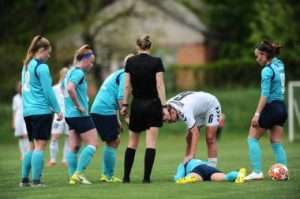
Can You Exercise With Mono (7 Important Guidelines)
Can you exercise with mono? While it’s generally advised to rest and avoid strenuous activity during the acute phase of mononucleosis, light exercises such as walking or gentle stretching might be possible depending on individual symptoms and energy levels. Always consult with a healthcare provider before starting any exercise regimen while recovering from mono.
Exercising with mononucleosis (mono) might sound like a Herculean challenge, but it’s not entirely out of the question. This viral infection, infamous for inducing intense fatigue and sore throats, often sidelines even the most dedicated fitness enthusiasts. However, with careful consideration and a tailored approach, it’s possible to maintain a level of physical activity that supports your recovery rather than hinders it. Can you really balance the rigors of exercise with the demands of mono? Let’s explore how to navigate this delicate dance between staying active and allowing your body the rest it craves.

Can You Exercise With Mono
Exercising with mononucleosis, commonly referred to as mono, is generally not recommended. Mono, often called the “kissing disease,” is caused by the Epstein-Barr virus (EBV) and primarily affects teenagers and young adults. It leads to symptoms such as extreme fatigue, fever, sore throat, and swollen lymph nodes. Given the intensity of these symptoms, engaging in physical activities can exacerbate the condition and prolong recovery. Therefore, it’s essential to rest and avoid strenuous exercises until fully recovered.
Understanding Mononucleosis
Mononucleosis, often abbreviated as mono, is a viral infection that causes prolonged fatigue and other debilitating symptoms. People with mono frequently experience a persistent sore throat, swollen lymph nodes, fever, and overall body aches. These symptoms can be quite severe and may last for several weeks. Due to the fatigue and weakness associated with mono, doctors usually advise against engaging in any form of physical exertion. Rest is crucial because the spleen can become enlarged during a mono infection, and strenuous activities can lead to complications such as a ruptured spleen.
The Risks of Exercising with Mono
When considering exercise with mono, it’s vital to understand the risks involved. Physical activity can strain an already weakened immune system, making it harder for the body to fight off the virus. This can lead to a longer recovery time and increased severity of symptoms.
Additionally, mono can cause an enlarged spleen, and intense physical activity increases the risk of spleen rupture, which is a medical emergency. Common advice from healthcare providers includes avoiding contact sports and heavy lifting until a doctor gives the all-clear. Gradual, light activities like walking might be okay as recovery progresses, but always consult a healthcare professional before resuming any exercise regimen.
Safe Practices During Recovery
Recovery from mono requires patience and careful management of activities. Initial recovery should focus on complete rest, hydration, and proper nutrition to support the immune system. As symptoms improve, gentle activities like light stretching or short, slow walks can be introduced. It’s crucial to listen to your body and avoid pushing through fatigue, as this can set back recovery.
Monitoring symptoms and maintaining regular check-ups with a healthcare provider will ensure that the recovery process is on track and that exercise is resumed safely. Resuming normal activities should be a gradual process, emphasizing the importance of giving the body ample time to heal.
Understanding Mononucleosis
Symptoms of Mono
Mononucleosis, commonly referred to as “mono,” is an infectious disease typically caused by the Epstein-Barr virus (EBV). This condition is most frequently seen in adolescents and young adults, though it can affect individuals of any age. Understanding the symptoms of mono is crucial for timely diagnosis and management. One of the hallmark symptoms is persistent fatigue, which can be profound and last for weeks or even months, significantly impacting daily activities and overall quality of life.
Fever is another common symptom, often accompanied by chills and sweating, adding to the general feeling of malaise. A sore throat is also a prevalent symptom and can be severe, sometimes mistaken for strep throat due to the intensity of the pain and the presence of white patches on the tonsils. Swollen lymph nodes, particularly in the neck and armpits, are a telltale sign of mono, resulting from the body’s immune response to the viral infection.
Additionally, an enlarged spleen is a critical symptom to watch for; while it may not always present obvious discomfort, it can lead to serious complications if the spleen ruptures, necessitating careful monitoring and sometimes limiting physical activities to prevent injury. Understanding these symptoms helps in recognizing mono early, ensuring appropriate rest and care to manage the illness and avoid potential complications
Diagnosis
During a physical examination, a healthcare provider typically looks for signs such as swollen lymph nodes, especially in the neck and armpits, an enlarged spleen, and tonsils that may be swollen or covered with a whitish coating. The presence of a fever, sore throat, and fatigue also helps guide the diagnosis.
To confirm mononucleosis, blood tests are essential. The most common blood test used is the monospot test, which detects heterophile antibodies that are often present during a mono infection. Although the monospot test provides rapid results, it may not detect the infection early on. Therefore, additional blood tests may be conducted, such as a complete blood count (CBC) to identify atypical white blood cells (lymphocytes) that are indicative of mono.
A test for specific antibodies against the Epstein-Barr virus (EBV), which is the primary cause of mononucleosis, can also be done to confirm the diagnosis. These tests can identify both current and past infections, helping to differentiate between an active case of mono and a previous exposure. Combining the findings from the physical examination with the results of these blood tests enables healthcare providers to accurately diagnose mononucleosis and recommend appropriate management and treatment plans.
Typical Duration and Course of the Illness
The illness typically progresses through two main phases: the acute phase and the recovery phase. The acute phase, lasting 2 to 4 weeks, is characterized by the most intense symptoms. During this period, patients may experience severe throat pain, significant lymph node enlargement, and pronounced fatigue, often accompanied by a high fever and an enlarged spleen.
The severity of these symptoms can lead to substantial discomfort and may interfere with daily activities, necessitating rest and supportive care. Following the acute phase, the recovery phase can extend over several weeks to months. During this time, while the fever and sore throat usually subside, patients often continue to experience lingering fatigue and generalized weakness. It is crucial for individuals to manage their energy levels carefully and avoid strenuous activities, particularly contact sports, to prevent complications such as spleen rupture.
Recovery can be gradual, and it is not uncommon for individuals to feel periods of well-being interspersed with days of fatigue. Overall, mononucleosis demands patience and attentive self-care, with a focus on adequate rest, hydration, and nutrition to support the immune system’s efforts in combating the virus and facilitating a complete recovery.
Exercise and Mononucleosis: General Guidelines
When to Avoid Exercise
During the acute phase of mononucleosis, it is crucial to avoid exercise due to the body’s increased need for rest and recovery. Engaging in physical activity during this time can exacerbate symptoms and prolong the illness. Severe symptoms such as extreme fatigue, fever, sore throat, and swollen lymph nodes signal that the body is under significant stress, making rest a priority.
Another critical factor to consider is the presence of spleen enlargement, a common complication of mono. The spleen, an organ involved in filtering blood and supporting the immune system, can become swollen and vulnerable to rupture with physical exertion. A ruptured spleen is a medical emergency requiring immediate attention. Therefore, individuals diagnosed with mononucleosis should refrain from exercise, especially high-impact or contact sports, until a healthcare provider confirms that it is safe to resume physical activities. Gradual reintroduction of exercise is recommended once the acute phase has passed, symptoms have subsided, and there is no longer a risk of spleen rupture.
Risks of Exercising with Mono
Exercising while suffering from mononucleosis, commonly known as mono, can pose significant health risks that exacerbate the condition and delay recovery. One of the most serious risks is the potential for spleen rupture. Mono often causes the spleen to enlarge, making it more vulnerable to rupture, which is a medical emergency that can result in severe internal bleeding and necessitate immediate surgery.
Engaging in physical activities, especially contact sports or exercises involving heavy lifting, increases the likelihood of this life-threatening complication. Additionally, mono causes extreme fatigue as the body fights the Epstein-Barr virus. Exercising while already experiencing profound tiredness can lead to heightened exhaustion, making it difficult for the immune system to combat the infection effectively. This excessive fatigue can also impair coordination and concentration, raising the risk of accidents and injuries during physical activity.
Furthermore, pushing the body to exercise during a bout of mono can delay the overall recovery process. The body’s resources are diverted from healing and fighting the virus to support physical exertion, prolonging symptoms and potentially leading to chronic health issues. It’s crucial for individuals with mono to prioritize rest and follow medical advice to ensure a safe and complete recovery.
Gradual Return to Exercise
Importance of Rest and Recovery
Gradually returning to exercise after a bout of mononucleosis (mono) is crucial for ensuring a full recovery and avoiding potential complications. Mononucleosis, caused by the Epstein-Barr virus, can lead to prolonged fatigue, muscle weakness, and an enlarged spleen, making rest and recovery essential. Initially, complete rest is paramount to allow the body to combat the virus and heal. This period of rest helps reduce the risk of spleen rupture, which can occur if strenuous activities are resumed too soon.
Monitoring symptoms closely during recovery is vital; individuals should pay attention to persistent fatigue, sore throat, fever, and any unusual pain or discomfort. As symptoms begin to subside, light activities such as walking or gentle stretching can be introduced, but it’s essential to progress slowly and avoid pushing the body too hard. Gradual increases in intensity should be based on how the body responds, ensuring that any resurgence of symptoms is addressed promptly by scaling back activity. By carefully balancing rest with a gradual reintroduction to exercise, individuals recovering from mono can help their bodies heal effectively while minimizing the risk of relapse or further health issues.
Signs That Indicate Readiness for Exercise
Signs that indicate readiness for exercise include a significant reduction in symptoms, such as the resolution of fever, sore throat, and lymph node swelling, as well as a noticeable improvement in overall energy levels. However, it is essential to obtain medical clearance from a healthcare provider before resuming physical activity. This clearance ensures that the spleen has returned to a normal size, minimizing the risk of rupture, which can be life-threatening.
The initial phase of returning to exercise should focus on low-impact activities such as walking or gentle stretching. These activities help rebuild strength and stamina without overtaxing the body. Gradually, as endurance improves and symptoms remain absent, more strenuous activities can be incorporated, always with attention to the body’s responses and potential signs of overexertion. Throughout this process, maintaining adequate hydration, nutrition, and sleep is vital to support the body’s recovery and prevent relapse. By carefully monitoring progress and heeding medical advice, individuals can safely return to their regular exercise routines and enjoy the benefits of physical fitness post-mono.
Step-by-Step Approach to Resuming Exercise
Resuming exercise after recovering from mononucleosis (mono) should be approached with caution and a well-structured plan to ensure a safe and effective return to physical activity. The step-by-step approach begins with incorporating light activities, such as walking. This initial phase allows the body to gently reintroduce movement without overexertion, helping to gauge overall stamina and readiness for more strenuous activities.
As the individual’s strength and energy levels begin to improve, a gradual increase in both intensity and duration of exercise can be introduced. This progression should be slow and deliberate, ensuring that the body can adequately adapt to each new level of activity without experiencing undue fatigue or setbacks. Throughout this process, it is crucial to monitor the body’s response to exercise closely. This includes paying attention to signs of fatigue, soreness, or any recurrence of symptoms associated with mono, such as fever, swollen glands, or extreme tiredness.
Adjustments to the exercise regimen should be made based on these observations, potentially slowing the pace of progression or taking additional rest as needed. Consulting with a healthcare provider can provide valuable guidance and reassurance, helping to tailor the exercise plan to individual recovery needs and ensuring that the return to full activity is both safe and sustainable. This measured and mindful approach allows for a balanced recovery, fostering a return to fitness that supports overall health and well-being.

Types of Exercise to Avoid Initially
High-impact sports, such as running or jumping, should be avoided in the early stages of recovery due to the strain they place on the body, particularly the cardiovascular and musculoskeletal systems. Contact sports, like football or hockey, pose a significant risk because of the potential for physical trauma, which can be especially dangerous if the spleen is still enlarged from the infection.
Heavy weight lifting should also be avoided initially, as it can cause undue stress on the body and lead to complications, such as muscle strain or injury, that can hinder the recovery process. Instead, focus on light resistance training with a gradual increase in intensity. Monitoring the body’s response to exercise is essential, and any signs of fatigue, pain, or discomfort should prompt a reduction in activity levels. Consulting with a healthcare professional can provide personalized guidance and help establish a safe and effective exercise regimen tailored to the individual’s recovery progress.

Safe Exercise Practices During Recovery
Low-Impact Exercises
Low-impact exercises are particularly beneficial as they minimize stress on the joints and tissues while promoting mobility and circulation. Walking is one of the simplest yet most effective low-impact exercises. It helps maintain cardiovascular health, enhances mood, and gradually rebuilds strength without overexerting the body. Starting with short distances and progressively increasing the duration and intensity can aid in a safe recovery.
Stretching and yoga are excellent for improving flexibility, reducing muscle tension, and promoting relaxation. Gentle yoga poses and stretches tailored to the individual’s specific needs can enhance range of motion and support muscle recovery. It’s essential to avoid any movements that cause pain or discomfort and to focus on breathing techniques to foster relaxation and improve oxygen flow to the tissues.
Light cycling, whether on a stationary bike or a gentle outdoor ride, offers another low-impact option. It strengthens the lower body muscles, improves cardiovascular fitness, and enhances joint mobility without placing excessive strain on the injured areas. Starting with short, low-resistance sessions and gradually increasing the intensity can help in building endurance and strength safely.
Throughout the recovery process, it’s important to listen to the body, avoid pushing through pain, and consult with healthcare professionals to tailor the exercise regimen to individual needs and ensure a safe and effective recovery journey.
Hydration and Nutrition
Safe exercise practices during recovery are crucial to ensure a smooth and effective healing process while avoiding further injury. Proper hydration and nutrition play pivotal roles in this context. Staying hydrated is essential as it helps maintain the body’s fluid balance, which is vital for muscle function, joint lubrication, and temperature regulation. Dehydration can lead to muscle cramps, dizziness, and decreased performance, all of which can hinder recovery efforts. Therefore, drinking ample water before, during, and after exercise is necessary.
Additionally, consuming a balanced diet rich in essential nutrients supports the body’s repair processes. Proteins are crucial for muscle repair and growth, while carbohydrates replenish energy stores depleted during exercise. Healthy fats are important for cellular health and hormonal balance.
Vitamins and minerals, such as vitamin C, vitamin D, calcium, and magnesium, are also integral for bone health and immune function. Including a variety of fruits, vegetables, lean proteins, whole grains, and healthy fats in the diet ensures that the body receives the necessary nutrients to facilitate recovery. Thus, a comprehensive approach that combines safe exercise practices with adequate hydration and balanced nutrition can significantly enhance the recovery process, promoting overall health and well-being.
Medical Considerations
Monitoring for Complications
Exercising with mononucleosis (mono) requires careful monitoring for potential complications to ensure patient safety. Mono, caused by the Epstein-Barr virus, often presents with symptoms such as extreme fatigue, fever, sore throat, and swollen lymph nodes, which can be exacerbated by physical exertion. It is crucial to watch for persistent or worsening symptoms, such as prolonged fever, increasing fatigue, or severe sore throat, which may indicate that the body is not coping well with the additional stress of exercise.
A particularly significant concern is the risk of spleen issues, as the spleen can become enlarged during mono and is more susceptible to rupture, especially with physical activities that involve contact or jarring movements. Signs of spleen problems include upper left abdominal pain, tenderness, or a feeling of fullness without eating.
Additionally, mono can impact other organs, such as the liver, leading to complications like hepatitis, characterized by jaundice, dark urine, or abdominal pain. Careful and gradual return to physical activity, under medical supervision, is essential to avoid these complications. Monitoring should include regular medical evaluations and possibly imaging studies, such as ultrasound, to assess spleen size and liver function, ensuring that exercise does not aggravate these conditions or lead to severe outcomes.
Psychological Impact and Support
Emotional Challenges
Mononucleosis, often referred to as “mono,” can have profound psychological impacts, primarily due to its extended recovery period and the associated physical limitations. The frustration stemming from restricted activities can be particularly challenging for individuals who are accustomed to a more active lifestyle. This sudden halt can lead to feelings of helplessness and irritability as they struggle to adjust to a slower pace of life.
Moreover, the anxiety about prolonged recovery can exacerbate these emotional challenges. The uncertainty regarding the duration of symptoms and the timeline for full recovery can create a sense of unease and fear about the future. Patients might worry about falling behind in their personal and professional lives, leading to increased stress. It’s essential for those dealing with mono to receive psychological support alongside medical treatment.
Counseling or therapy can provide a safe space to express these frustrations and anxieties, offering coping strategies to manage them effectively. Support groups, either in person or online, can also be beneficial, as they allow individuals to connect with others who are experiencing similar challenges, fostering a sense of community and understanding. Educating patients about the typical course of mono and setting realistic expectations can help mitigate some of the anxiety. Encouragement to engage in light, permissible activities can also provide a sense of accomplishment and normalcy. Overall, addressing the psychological impact of mono through comprehensive support is crucial in aiding the emotional well-being and holistic recovery of patients.
FAQ: Can You Exercise With Mono
Q1. Is it safe to exercise if I have mononucleosis?
A. Generally, it is not safe to exercise while you have mono. The illness often causes significant fatigue and can enlarge the spleen, making physical activity risky.
Q2. How long should I wait before resuming exercise after being diagnosed with mono?
A. It’s typically recommended to avoid exercise for at least 3-4 weeks after the onset of symptoms. Only resume once you have been symptom-free for a period and your doctor has cleared you to do so.
Q3. What are the potential dangers of exercising with mono?
A. Exercising with mono can lead to severe complications, such as spleen rupture, prolonged fatigue, and a delay in recovery. It’s crucial to give your body time to heal.
Q4. Can I do any form of exercise while recovering from mono?
A. Light activities like gentle stretching or short walks may be permissible with your doctor’s approval. Strenuous activities and contact sports should be avoided until you are fully recovered.
Q5. How do I know if I’m ready to start exercising again after mono?
A. You should feel completely free of mono symptoms, such as fatigue, fever, and body aches. A healthcare provider should evaluate your condition, especially checking if your spleen has returned to normal size.
Q6. Does exercise aid in recovering from mono?
A. During the acute phase of mono, rest is crucial. Exercise should only be reintroduced gradually and under medical supervision after symptoms have subsided, helping to rebuild strength and stamina.
Q7. What steps should I take when resuming exercise post-mono?
A. Start with low-intensity exercises and slowly increase the duration and intensity. Monitor your body’s response and consult your doctor if you experience any adverse symptoms.
Q8. Can mono symptoms recur if I start exercising too soon?
A. Yes, starting exercise too early can trigger a relapse or worsen symptoms. It’s essential to ensure complete recovery and follow medical advice regarding physical activity.
Q9. Is participating in competitive sports safe with mono?
A. Competitive sports are generally unsafe with mono due to the increased risk of spleen injury and other complications. Always get a medical clearance before returning to any high-intensity or contact sports.
Q10. How can I keep fit while recovering from mono?
A. Focus on a balanced diet, hydration, and sufficient rest. Once cleared by your doctor, begin with mild, low-impact exercises and gradually increase as your strength returns.
Conclusion
Exercising with mononucleosis (mono) requires careful consideration and should be approached with caution. While light activities like gentle stretching or short walks may be safe during the recovery period, it’s crucial to avoid strenuous exercise, especially during the acute phase of the illness. The risk of complications such as spleen rupture or prolonged fatigue necessitates consulting with a healthcare professional before resuming any exercise routine. Gradually reintroducing physical activity as symptoms improve and with medical clearance can support a safe return to normal fitness levels. Prioritizing rest and recovery is essential to prevent setbacks and ensure a full recovery from mono.